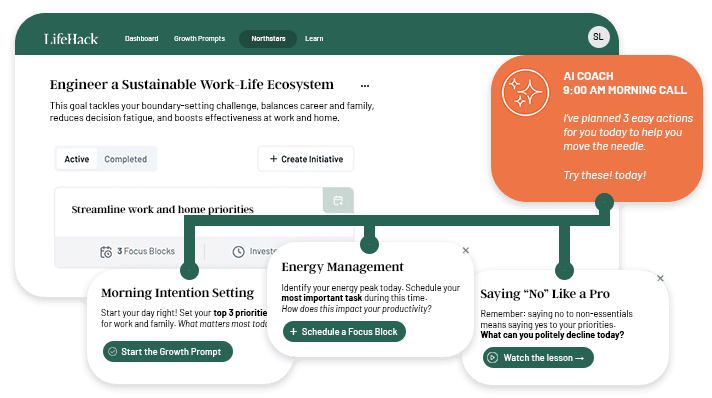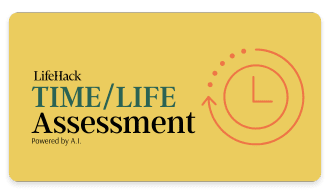Put yourself in a recruiter’s shoes.
If you were faced with a stack of résumés what would you want? The ability to download all the info into your brain, the way that Neo from The Matrix gets plugged in and learns Kung Fu in about ten seconds?
Unfortunately it doesn’t really work like that. In fact, research shows that recruiters take only six seconds to make their initial judgement on a résumé. If your résumé is screened by a computer first, it may not even get that far.
So, your job, when creating a killer résumé, is to make it really easy for the recruiter to spot the most important benefits you offer the employer.
Do the work, so they don’t have to. Here’s how:
1. Make sure your résumé is tailored to the job you are applying for
Generic résumés may be quick to submit, but far less effective. Better one excellent job application than three shoddy ones.
Researching the cultural norms of the organization is worthwhile. For example, within one industry some will value experience but not care much about education, while others care about your qualifications.
2. Only apply if you meet the job criteria
Don’t waste your time or the recruiter’s applying for jobs if you don’t meet their criteria. If you still want that job, go and expand your skill set before trying again in future.
3. Don’t lie
Even if you get through the first screening, lying about or exaggerating your accomplishments is likely to come back to bite you. Recovering from the loss of trust is hard.
4. Add keywords
After writing the résumé, check it for keywords from the job description.
Keywords are gifts to you from the employer. Add them into the existing text so they flow naturally. This will help your résumé get past screening software, and recruiters who are accustomed to searching quickly for these keywords.
5. Structure your résumé carefully
It is easiest for the recruiter if your key skills and background are summarised at the top. Make sure your current and most recent previous role are on the first page.
Your education and qualifications are generally less important than your professional experience, so put these later.
6. Show how your most recent two jobs are relevant
Recruiters will spend 80% of their time on your name, the company, job title, start and end dates for your current and previous companies, and finally your education.
If you are changing direction in your career, you will need to work even harder to draw out the skills and networks you are bringing from these last two jobs.
7. Keep the résumé short
Remember the recruiter will scan your résumé in seconds. Including your school paper round or even lengthy details of your first job out of college is not something a recruiter will thank you for (unless, of course, you are applying for your second job out of college).
8. Demonstrate progress
Show the recruiter that your career makes sense. Tell a story which shows promotions and additional responsibilities as you delivered value to your employer.
9. Use CAR as a guide
CAR stands for Context, Action, Results. Use them as a mental checklist. Keep the context short: just long enough for the recruiter to know what your job was. Spend longest what you actually achieved as a result of the actions that you took.
Unlock Your Time Potential: From Chaos to Control
Discover how to reclaim your time and transform chaos into productivity with our comprehensive Time/Life Assessment.
If you're ready to take control of your time and boost your efficiency, don't miss this opportunity to get a personalized analysis and action plan.

10. Provide proof
Qualify your results wherever possible. Beating your targets, raising finance, cutting costs, making great sales all provide convincing and easily digested data which demonstrate your achievements. Social proof such as promotions and customer feedback are also worthwhile.
11. Show you are a rounded person
Include personal projects, sports or voluntary work that you participate in, but be aware if they are activities which might stereotype you or turn an employer off.
12. Include links to other sites and social media
Keep your résumé short while demonstrating your talents by providing links to articles, photos, or websites you’ve designed, or a portfolio. Also, provide the url for your LinkedIn profile and Twitter feed it those reflect your professional abilities.
Clearly, you want to avoid a Facebook page with photos of your drunken exploits. Better still, don’t post these on social media in the first place.
13. Give a good reason for leaving an employer
Recruiters will especially be looking at the reasons you want to leave your current employer and how long you were with them. If you’ve had a series of short-lived positions you’ll need a convincing explanation of why a recruiter should take a risk on you.
14. Explain gaps in your employment history
Leaving a gap on your résumé leaves the recruiter wondering. If you’ve taken time out for parenting or starting your own business, tell them. If you’ve been traveling, show how it has enriched you as a candidate.
15. Exclude irrelevant information
Don’t reveal your age, race, gender, marital status, or whether you have kids. Research shows that even the most self-aware recruiters have unconscious biases.
16. Show your eligibility to work
Make it easy for a recruiter to be confident that you are eligible to work without having to apply for work permits.
17. Make it easy for the recruiter to contact you
Include contact details with your email and one phone number (don’t make the recruiter have to guess which number to use). Don’t bother with your home address.
18. Format for clarity
Make sure your formatting goes hand in hand with the résumé structure to ensure recruiters can spot the key information easily.
Create clear sections with easy-to-read, consistent headlines. Use an attractive font, which is also easy to read. Don’t use Word templates. If your design skills are truly terrible get someone else to do the formatting for you.
19. Stick to a familiar format
In this case, boring is good. Unless you are specifically applying for a graphic design or creative role and want to demonstrate your talent, avoid unusual formats. Remember, the recruiter doesn’t want to be distracted as they scan the page.
Cut anything that seems clever but reduces clarity, including pictures. If you do use something different, make sure it is effective and suits the employer’s own style before you submit it.
20. Submit your résumé in pdf format
Unless you are asked otherwise, send your résumé as a pdf. This will ensure your formatting remains consistent on any device.
21. Spell-check and grammar-check
Obvious, perhaps, but surprisingly often spelling and grammar mistakes are what leads to a résumé being put in the reject pile. Use the past tense and third person, not first person consistently throughout your résumé.
Don’t rely on your computer’s spelling and grammar checkers. They are often wrong. Edit it yourself and then get another person to read your résumé with fresh eyes.
22. Check before you include a cover letter
Most cover letters are a waste of time. Either don’t bother, or, if the recruiter specifically requests one, make sure it says something meaningful.
Cover letters can be used as headlines, picking out the most relevant parts of a résumé. They can deal with issues the recruiter may be concerned about, such as a change of career direction. They can remind a recruiter about an occasion that gave them cause to trust or care about you.
23. Don’t write to the CEO
Unless you are applying to a tiny company, or you know the CEO personally, it is not the CEO who will be doing the initial screening. Don’t waste their time.
Featured photo credit: typing on laptop, picture about education via shutterstock.com
Ready for a Goal Breakthrough? Unlock Your Personalized Strategy

Experience the power of a strategy tailored just for you.
Our personalized system provides:
- Custom-crafted action steps based on your unique situation
- Insights tailored to your specific challenges and strengths
- A personalized roadmap to turn your goals into reality
Tailored recommendations powered by smart analysis















































